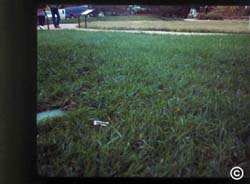
Which grasses are best during droughts?
Water conservation has come to the forefront, and as a result, several grasses have been recommended as alternatives to Kentucky bluegrass. One of these alternative grasses is turf-type tall fescue. Formerly, tall fescue was used primarily as a pasture grass. In the past ten to fifteen years, it has been the subject of breeding research to improve its characteristics for lawn use. The resulting turf-type tall fescues have been touted as drought-resistant lawn grasses. In well-drained soils, tall fescue requires less irrigation, because roots develop deeply. That means roots access water deeper in the soil than other grasses.
What should I consider when plating tall fescue?
Along much of Colorado’s Front Range, soils may be shallow, gravelly or consist of heavy clays that drain poorly and have low porosity. These conditions prevent deep-root development of tall fescue. As a result, it may actually require as much or more water than bluegrass.
Why is tall fescue good for lawns?
However, tall fescue has other characteristics that make it a good choice for lawns. It’s more tolerant of shade and salty soils than bluegrass. It has few insect or disease problems, and requires less fertilizer. And thatch is rarely a problem. On the downside, it may need to be mowed more frequently and mower blades require more frequent sharpening.
When should I lay seed for tall fescue?
Tall fescue sod is not widely available and is generally more expensive. Turf-type tall fescue seed blends are available and should be sown at eight to nine pounds per one-thousand square feet. Late August into September is the best time to establish a lawn from seed, but late April into early June also will work.
For more information, see the following Colorado State University Extension fact sheet(s).



